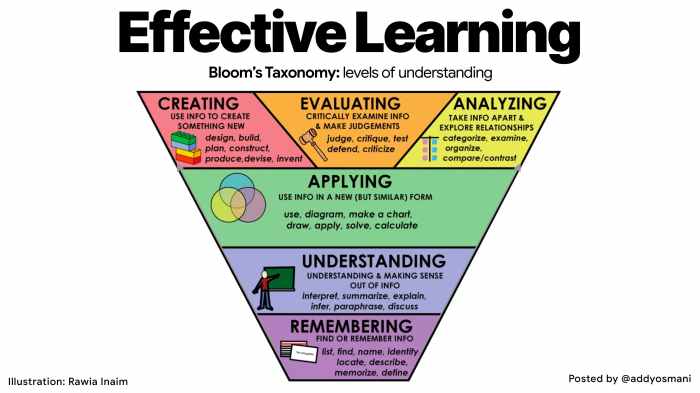15 simple but powerful back exercises ease stiffness and lower back pain. Back pain and stiffness can significantly impact daily life, making even simple tasks challenging. This guide provides a comprehensive approach to managing these issues, emphasizing the importance of incorporating targeted exercises into your routine. Learning proper form and understanding the specific muscles worked is crucial for achieving optimal results and preventing injury.
Let’s explore 15 exercises designed to ease stiffness and lower back pain, progressing from beginner to advanced levels.
This comprehensive guide will walk you through 15 simple back exercises, explaining how to perform each one correctly and safely. We’ll cover essential aspects like warm-up routines, cool-down stretches, and how to integrate these exercises into your daily schedule. Discover the long-term benefits of regular back exercises and learn how to maintain a healthy back through proper form, consistent practice, and lifestyle choices.
Introduction to Back Exercises

Back pain and stiffness are common ailments affecting a significant portion of the population. This discomfort can range from mild aches to debilitating chronic pain, impacting daily activities and overall well-being. Understanding the causes and employing effective strategies for pain management is crucial. Incorporating targeted exercises into a comprehensive pain management plan is vital for long-term relief and improved function.Simple exercises, when performed correctly, can significantly contribute to back health.
Strengthening the muscles surrounding the spine and improving flexibility can alleviate pain, reduce stiffness, and enhance overall posture. These exercises, often surprisingly straightforward, can be incorporated into a daily routine, contributing to lasting relief and a healthier back. A crucial component of successful exercise is proper form. Incorrect form can lead to further injury and negate the positive effects of the exercise.
Maintaining proper alignment and controlled movements is essential for maximizing the benefits and minimizing risks.
Understanding Back Pain and Stiffness
| Topic | Description |
|---|---|
| Causes of Back Pain | Back pain can stem from various factors, including muscle strain, poor posture, injuries, or underlying medical conditions. Identifying the root cause is crucial for effective treatment and pain management. |
| Impact on Daily Life | Back pain and stiffness can significantly affect daily activities, from simple movements to more complex tasks. This can lead to reduced mobility, decreased productivity, and decreased overall quality of life. |
Importance of Exercise in Pain Management
Properly designed exercises can help alleviate back pain and stiffness by strengthening supportive muscles, improving posture, and increasing flexibility. Exercises target specific muscle groups around the spine, helping to stabilize the spine and reduce the risk of further injury. Consistent exercise programs contribute to a more resilient and healthy back.
Benefits of Simple Back Exercises
- Improved Posture: Exercises that strengthen core muscles and back muscles help maintain proper posture, reducing strain on the spine and lessening back pain.
- Increased Flexibility: Flexibility exercises can stretch tight muscles and improve joint mobility, easing stiffness and promoting better movement.
- Reduced Pain: Regular exercise can significantly reduce pain by strengthening the muscles that support the spine and improve blood flow to the area.
- Enhanced Spinal Stability: Stronger back and core muscles create a more stable spine, reducing the risk of future injury and pain.
Significance of Proper Form in Back Exercises
Correct form is paramount when performing back exercises. Improper form can lead to further injury, negate the benefits of the exercise, and potentially exacerbate existing pain. It’s essential to focus on controlled movements and maintain proper alignment throughout the exercise. Consult with a healthcare professional or physical therapist for guidance on appropriate form for your specific needs and conditions.
Exercise Examples (Illustrative):
Proper form is essential. Consult a professional for guidance tailored to your individual needs.
- Cat-Cow Stretch: This gentle exercise warms up the back and improves spinal mobility. Inhale, arching your back like a cow, and exhale, rounding your back like a cat. Repeat several times. This exercise is suitable for various fitness levels.
- Bird Dog: This exercise strengthens the core muscles and improves spinal stability. Start on all fours, extend one arm and opposite leg, maintaining a straight line from head to heels. Return to the starting position and repeat on the other side. Maintaining proper form is crucial to avoid strain.
Identifying Simple Back Exercises
Easing stiffness and lower back pain often starts with targeted exercises. Understanding the specific muscles involved and the proper techniques for each movement is crucial for safe and effective results. This section details 15 simple back exercises, outlining their purpose, the muscles they engage, and the steps to perform them correctly.
Simple Back Exercises for Stiffness and Pain
These exercises are designed to strengthen the muscles supporting your spine, improving flexibility, and reducing pain. Performing them consistently and correctly is key to experiencing the benefits.
| Exercise Name | Description | Steps | Muscles Worked |
|---|---|---|---|
| Child’s Pose | A gentle stretch for the back, hips, and thighs. | Kneel on the floor, sit back on your heels, and fold forward, resting your forehead on the mat. Extend your arms forward. | Lower back, hips, hamstrings, and shoulders. |
| Cat-Cow Pose | A gentle spinal movement that warms up and stretches the back. | Start on all fours, arch your back like a cat (inhale), then drop your belly and chest towards the floor (exhale). Repeat. | Lower back, abdominal muscles, and spine. |
| Bridge Pose | Strengthens the glutes and lower back muscles. | Lie on your back with knees bent and feet flat on the floor. Push through your heels to lift your hips off the floor, creating a straight line from knees to shoulders. Lower back down slowly. | Glutes, hamstrings, lower back, and core. |
| Superman | Strengthens the back muscles and improves posture. | Lie on your stomach with arms extended and legs straight. Simultaneously lift your arms, chest, and legs off the floor, holding for a few seconds. Lower slowly. | Upper back, lower back, glutes, and hamstrings. |
| Back Extensions | Strengthens the erector spinae muscles, crucial for back support. | Lie face down on a bench or mat, with legs straight or slightly bent. Slowly raise your upper body off the bench, focusing on a controlled movement. Lower back down. | Erector spinae, spinal erectors, and lower back. |
| Bent-Knee Back Extensions | Targets lower back muscles and improves flexibility. | Lie face down with knees bent and feet flat on the floor. Lift your upper body off the floor, keeping your knees bent. Lower back down slowly. | Lower back, glutes, and hamstrings. |
| Seated Row | Strengthens the back muscles, particularly the rhomboids and mid-back. | Sit on a chair with your feet flat on the floor. Hold a resistance band or light weight in both hands. Pull the weights towards your chest, keeping your back straight. Lower back down slowly. | Mid-back, rhomboids, trapezius, and biceps. |
| Bird-Dog | Strengthens core and back muscles. | Start on all fours. Extend one arm forward and the opposite leg backward, keeping your body in a straight line. Hold for a few seconds and return to the starting position. Repeat with the other side. | Core, lower back, glutes, and shoulders. |
| Side Plank | Strengthens the obliques and helps improve posture. | Lie on your side, supporting your body weight on your forearm and the outer edge of your foot. Lift your hips off the floor, forming a straight line from head to heels. Hold for a few seconds and lower back down. Repeat on the other side. | Obliques, core, and shoulders. |
| Glute Bridges | Targets glutes and lower back muscles. | Lie on your back with knees bent and feet flat on the floor. Push through your heels to lift your hips off the floor, squeezing your glutes at the top. Lower back down slowly. | Glutes, lower back, and hamstrings. |
| Plank | Strengthens core and back muscles. | Start in a push-up position, but rest on your forearms instead of your hands. Keep your body in a straight line from head to heels. Hold for as long as possible, maintaining good form. | Core, shoulders, and back muscles. |
| Wall Angels | Increases spinal mobility and flexibility. | Stand with your back against a wall, feet shoulder-width apart. Slowly bend your arms and lower your chest towards the floor, keeping your back pressed against the wall. Return to the starting position. | Thoracic spine, shoulders, and back muscles. |
| Chest Stretch | Opens up the chest and shoulders, relieving tension. | Stand with your feet shoulder-width apart, and place one hand on a wall or doorframe at shoulder height. Turn your body away from the wall or doorframe, feeling the stretch in your chest. Repeat on the other side. | Chest, shoulders, and upper back. |
| Hamstring Stretch | Stretches the hamstrings and lower back. | Stand with your legs straight and feet hip-width apart. Lean forward, keeping your back straight, until you feel a stretch in your hamstrings. Hold for a few seconds. | Hamstrings, lower back, and calves. |
| Quad Stretch | Stretches the quadriceps and hips. | Stand with your feet hip-width apart. Grab one foot with your hand and pull it towards your glutes, keeping your knee close to your body. Hold for a few seconds and repeat on the other side. | Quadriceps, hips, and lower back. |
Exercise Progression and Variations
Unlocking the full potential of back exercises requires understanding how to progress from beginner to advanced levels. This involves gradually increasing the intensity, complexity, and duration of exercises to challenge your body and promote continuous improvement. Proper progression ensures that you build strength and flexibility safely, preventing injuries and maximizing the benefits of your back training. Variations are crucial for targeting different muscle groups and accommodating individual needs.
Progression Levels and Modifications
Understanding different progression levels allows you to tailor exercises to your current fitness level. Modifying exercises for specific needs, such as injuries or limitations, is vital to ensure safety and effectiveness. This structured approach ensures optimal results without compromising your well-being.
| Exercise | Progression Level | Modifications |
|---|---|---|
| Bird Dog |
|
|
| Superman |
|
|
| Back Extensions |
|
|
Safety Precautions and Considerations
Taking care of your back is crucial, and these safety precautions will help you avoid injuries while performing back exercises. Following these guidelines ensures a safe and effective workout routine that contributes to long-term back health. Remember that consistency and proper form are key to preventing pain and maximizing results.Proper form and precautions are essential when working out, especially for exercises focusing on the back.
Neglecting these can lead to injuries and setbacks in your progress. By understanding and applying these safety measures, you can significantly reduce the risk of harm and enjoy the benefits of a healthy back.
Crucial Safety Guidelines
Adhering to safety guidelines is paramount to prevent injuries during back exercises. These guidelines will help you perform the exercises correctly and avoid potential harm. Always prioritize your safety and listen to your body.
- Warm-up adequately before starting any exercise routine. A proper warm-up prepares your muscles for the activity, reducing the risk of strains and tears.
- Maintain proper posture and alignment throughout each exercise. Incorrect posture can put unnecessary stress on your spine and surrounding muscles, leading to injuries.
- Listen to your body. If you experience any pain, stop the exercise immediately. Don’t push through discomfort, as this can worsen the situation and potentially lead to chronic pain.
- Use proper breathing techniques. Deep, controlled breathing can help maintain stability and reduce muscle tension.
- Start with lighter weights or resistance levels. Gradually increase the intensity as you gain strength and confidence. Rushing into heavy weights can cause strain and injury.
- Use supportive equipment if necessary. Using stability balls, resistance bands, or other supportive equipment can help maintain proper form and reduce the risk of injury.
Common Mistakes to Avoid
Avoiding common mistakes is vital for a safe and effective back exercise routine. Understanding these errors will help you perform the exercises correctly and prevent potential harm.
- Rounding your back during exercises like back extensions or rows can put undue stress on your spine. Maintain a neutral spine throughout the movement. Proper form is essential to avoid straining your back muscles.
- Using momentum instead of controlled movements can lead to injuries. Focus on slow, controlled movements to engage the targeted muscles and avoid relying on momentum.
- Not engaging your core muscles during back exercises can lead to instability and potential injury. Actively engage your core throughout each exercise to support your spine and maintain stability.
- Holding your breath while exercising can increase intra-abdominal pressure, which can strain your back muscles. Maintain a steady and controlled breathing pattern to avoid such risks.
- Using improper form with resistance bands can cause injuries. Ensure the bands are used correctly and are not too tight, which can strain the back.
When to Consult a Healthcare Professional
Consulting a healthcare professional is essential when experiencing persistent or severe back pain. It’s crucial to determine the cause of the pain and receive appropriate guidance for treatment and recovery.
- If you experience persistent or worsening back pain, it’s important to seek professional advice. Consult your doctor or physical therapist for a proper diagnosis and treatment plan.
- If you have pre-existing back conditions or injuries, it’s vital to consult with a healthcare professional before starting any new exercise routine. This will help ensure the exercises are safe and suitable for your specific needs.
- If you experience sudden, severe back pain, seek immediate medical attention. This is critical to ensure prompt diagnosis and treatment, potentially preventing further complications.
Safety Tips and Potential Risks, 15 simple but powerful back exercises ease stiffness and lower back pain
Understanding the safety tips and potential risks associated with back exercises is crucial. This information will help you make informed decisions and prioritize your safety.
| Safety Tip | Potential Risk |
|---|---|
| Warm-up before each session | Muscle strain, tears |
| Maintain proper posture | Spinal stress, injury |
| Listen to your body | Exacerbation of pain, worsening injury |
| Use proper breathing | Increased muscle tension |
| Start with lighter weights | Muscle strain, injury |
| Use supportive equipment | Lack of support, incorrect form |
Warm-up and Cool-down Routines
Proper warm-up and cool-down routines are essential components of any exercise program, especially when targeting the back. They prepare the muscles for the workout, reducing the risk of injury, and promote recovery afterward. A well-structured warm-up gradually increases blood flow to the muscles, making them more flexible and responsive. Similarly, a cool-down allows the body to transition back to a resting state, reducing muscle soreness and promoting better recovery.These routines are not just about preventing injury; they are crucial for optimizing the benefits of your back exercises.
By preparing the body effectively before exercise and promoting recovery afterward, you can enhance the effectiveness of your workouts and experience less discomfort. The routines below provide practical examples to guide you in designing your own personalized program.
Warm-up Routine
A comprehensive warm-up routine should gradually increase the heart rate and prepare the muscles for the more intense exercises to follow. It typically involves dynamic stretches, which actively move the joints and muscles through a range of motion.
- Arm circles: Perform 10-15 circles forward and backward with both arms. This loosens the shoulder and upper back muscles, improving range of motion.
- Neck rotations: Slowly rotate your head clockwise and counter-clockwise, 10-15 times in each direction. This improves neck mobility and flexibility.
- Shoulder blade squeezes: Squeeze your shoulder blades together, hold for a few seconds, and repeat 10-15 times. This targets the muscles around the shoulder blades, crucial for back stability.
- Cat-cow stretch: Start on your hands and knees. Inhale, arch your back like a cow, and exhale, rounding your spine like a cat. Repeat 10-15 times. This warms the spine and surrounding muscles.
- Torso twists: Sit or stand tall and slowly twist your torso from side to side, 10-15 times per side. This targets the oblique muscles and improves spinal mobility.
Cool-down Routine
A cool-down is just as important as a warm-up. It allows your body to gradually return to its resting state, preventing muscle stiffness and promoting recovery. Static stretches, which hold a stretch for a set period, are often incorporated in cool-down routines.
- Child’s pose: Kneel on the floor, bring your big toes together, and sit back on your heels. Fold forward, resting your forehead on the mat. Hold for 30 seconds. This stretches the back, hips, and thighs.
- Hamstring stretch: Extend one leg straight out in front of you, and reach for your toes, keeping your back straight. Hold for 30 seconds and repeat on the other side. This stretches the hamstrings and lower back.
- Quadriceps stretch: Grab one foot with your hand and pull it towards your buttock. Hold for 30 seconds and repeat on the other side. This targets the quadriceps muscles and helps improve flexibility.
- Thoracic stretch: Place one arm behind your back and reach for the opposite hand with the other arm. Hold for 30 seconds and repeat on the other side. This stretches the chest and shoulders, which can impact posture and back pain.
- Seated spinal twist: Sit on the floor with legs extended, bend one knee, and place the sole of your foot on the opposite knee. Twist your torso towards the bent knee, holding for 30 seconds. Repeat on the other side. This stretches the back and spinal muscles.
Warm-up/Cool-down Activities
| Warm-up/Cool-down activity | Description |
|---|---|
| Arm circles | Gentle circular movements of the arms to warm up shoulder and upper back muscles. |
| Neck rotations | Slow rotations of the head to improve neck mobility and flexibility. |
| Shoulder blade squeezes | Squeezing shoulder blades together to target the muscles around the shoulder blades. |
| Cat-cow stretch | Alternating arching and rounding of the spine to warm up the spine and surrounding muscles. |
| Torso twists | Twisting the torso to target oblique muscles and improve spinal mobility. |
| Child’s pose | A resting stretch for the back, hips, and thighs. |
| Hamstring stretch | Stretching the hamstrings and lower back. |
| Quadriceps stretch | Stretching the quadriceps muscles. |
| Thoracic stretch | Stretching the chest and shoulders, impacting posture and back pain. |
| Seated spinal twist | Stretching the back and spinal muscles. |
Incorporating Exercises into a Routine
Consistency is key to reaping the benefits of any exercise program, including those designed to ease back stiffness and pain. Simply knowing the exercises isn’t enough; you need a plan to integrate them into your daily or weekly life. This section details strategies for building a sustainable routine, offering examples for different lifestyles, and a sample weekly schedule to get you started.
Creating a Sustainable Routine
A sustainable routine isn’t about punishing yourself with grueling workouts. It’s about finding activities that fit seamlessly into your lifestyle and provide long-term relief. This involves understanding your personal limitations and schedule, and adjusting the plan accordingly. Begin with a manageable number of exercises and gradually increase the frequency and duration as you feel stronger and more comfortable.
Integrating Exercises into Daily Routines
Incorporating these exercises doesn’t necessitate a dedicated gym time. They can be seamlessly integrated into your daily life. For example, a few simple back stretches can be performed while waiting for the kettle to boil, or during commercial breaks. These brief but consistent sessions are more effective than sporadic, intense workouts.
- Morning Routine: Start your day with a 5-10 minute warm-up routine, incorporating some of the exercises. This primes your muscles for the day and helps maintain flexibility. A simple set of cat-cow stretches, followed by a few repetitions of bridges and child’s poses can be beneficial.
- Mid-day Breaks: Take short breaks throughout your workday to perform simple stretches or exercises. A few minutes of back extensions, spinal twists, or seated rows can significantly reduce stiffness from prolonged sitting.
- Evening Relaxation: End your day with a 10-15 minute cool-down routine. This helps your muscles relax and prepares your body for sleep. Gentle stretches and deep breathing exercises are ideal.
Sample Weekly Schedule
The following table provides a sample weekly schedule for incorporating the exercises. Adjust the frequency and duration of each exercise based on your individual needs and limitations. Remember to prioritize consistency over intensity.
| Day | Exercises |
|---|---|
| Monday | Cat-cow stretch (5 min), Bird-dog (10 reps), Cobra pose (5 reps) |
| Tuesday | Seated rows (10-12 reps), Back extensions (10-12 reps), Knee to chest stretch (10 reps each side) |
| Wednesday | Rest or light activity |
| Thursday | Cat-cow stretch (5 min), Bird-dog (10 reps), Cobra pose (5 reps) |
| Friday | Seated rows (10-12 reps), Back extensions (10-12 reps), Knee to chest stretch (10 reps each side) |
| Saturday | Gentle walking or swimming (30 minutes) followed by stretching. |
| Sunday | Rest or light activity |
Illustrative Examples for Exercises
Unlocking the power of targeted back exercises is key to easing stiffness and lower back pain. Understanding the proper form and execution of each exercise is crucial for maximizing benefits and minimizing risk. These examples will guide you through the correct postures and movements, empowering you to incorporate these exercises safely and effectively into your routine.The following examples illustrate seven simple but powerful back exercises, each designed to target specific muscle groups and improve flexibility and strength.
Detailed descriptions and visual guidance will help you master each exercise, ensuring optimal results and minimizing the risk of injury.
Finding relief from back stiffness and pain is key, and these 15 simple exercises can really help. But, unlocking financial freedom often mirrors the same drive and dedication needed for a healthy back. It’s about consistent effort, pushing past limitations, and the entrepreneurial mind, like the one described in the only route financial freedom entrepreneurial mind , can lead to both physical and financial well-being.
So, get those muscles moving and you’ll be on the path to both a healthier back and a stronger mindset.
Pelvic Tilts
Pelvic tilts are a fundamental exercise for strengthening the core muscles and improving posture. They gently engage the muscles supporting the lower back, helping to alleviate pain and promote stability.
Proper pelvic tilt involves engaging the abdominal muscles and gently tilting the pelvis inward, creating a slight arch in the lower back.
Imagine you are pressing your lower back into the floor, engaging your abdominal muscles, and creating a gentle curve in the lower back. Your lower back should not be flat against the floor. This position helps to strengthen the muscles around the spine.
Cat-Cow Stretch
This dynamic exercise warms up the spine and promotes flexibility. It’s an excellent choice for improving mobility and reducing stiffness in the lower back.
The cat-cow stretch involves flowing between two postures: a rounded spinal position (cat) and an arched spinal position (cow).
Start on all fours, with hands directly under shoulders and knees directly under hips. Inhale and drop your belly towards the floor, allowing your back to arch gently (cow). Exhale and round your spine upward, tucking your chin to your chest (cat). Repeat the motion several times, flowing smoothly between the two positions. Maintain a controlled and rhythmic pace.
Feeling stiff and achy in your back? 15 simple but powerful exercises can help ease that discomfort. They’re great for building core strength, and a strong core can translate into a more fulfilling life. Plus, consider this: being your own boss can be incredibly rewarding. Want to learn more about the 7 reasons being an entrepreneur can be a fantastic life decision?
Check out this insightful article: 7 reasons being entrepreneur great life decision. Ultimately, these exercises, combined with a potentially fulfilling entrepreneurial path, can lead to a healthier, more empowered you.
Remember to keep your neck in line with your spine, avoiding any unnecessary strain.
Bird Dog
The bird dog exercise is a fantastic way to strengthen the core and improve balance. It particularly targets the muscles that stabilize the spine and pelvis, reducing lower back pain.
The bird dog exercise involves extending one arm and the opposite leg simultaneously, maintaining a straight line from head to heels.
Begin on all fours. Extend one arm forward and the opposite leg backward, ensuring both limbs are in a straight line with your body. Maintain a neutral spine and avoid arching your back. Hold for a few seconds, then return to the starting position. Repeat on the other side.
Superman
The Superman exercise strengthens the muscles in the back, improving posture and core stability. It effectively targets the erector spinae muscles, which are crucial for supporting the spine.
The Superman exercise involves simultaneously extending the arms and legs, lifting them off the floor while keeping the body aligned.
Lie on your stomach with arms extended in front of you and legs slightly apart. Simultaneously lift your arms, chest, and legs off the floor, creating a straight line from head to heels. Maintain a neutral spine, avoid arching your back, and focus on engaging the back muscles. Hold for a few seconds, then lower your limbs back down.
Knee-to-Chest Stretch
This exercise targets the lower back and hip flexors, improving flexibility and releasing tension. It is ideal for individuals experiencing tightness or stiffness in these areas.
The knee-to-chest stretch involves gently pulling one knee towards the chest, maintaining a neutral spine and avoiding any strain.
Lie on your back with knees bent and feet flat on the floor. Gently pull one knee towards your chest, keeping your lower back pressed against the floor. Hold for a few seconds, then repeat on the other side.
Hamstring Stretch
The hamstring stretch targets the muscles at the back of the thighs, which are often tight and contribute to lower back pain. Stretching these muscles can significantly improve flexibility and posture.
The hamstring stretch involves extending one leg straight in the air, keeping the back straight and avoiding arching the lower back.
Lie on your back with one leg extended straight in the air. Gently pull your leg towards your head, keeping your lower back pressed against the floor. Avoid arching your back or pulling on your knee. Hold for a few seconds, then repeat on the other side.
Bridge Pose
The bridge pose strengthens the glutes and hamstrings, while also improving core stability and lower back support. It’s a valuable exercise for preventing and alleviating lower back pain.
The bridge pose involves lifting the hips off the floor, creating a straight line from knees to shoulders, while keeping the back neutral.
Lie on your back with knees bent and feet flat on the floor. Lift your hips off the floor, creating a straight line from knees to shoulders. Ensure your lower back is pressed against the floor and your shoulders are relaxed. Hold for a few seconds, then slowly lower your hips back down.
Addressing Common Pain Points
Back pain and stiffness can stem from a multitude of factors, making it crucial to understand the underlying causes to effectively target the discomfort. These simple exercises, while powerful, are best used in conjunction with an understanding of your specific pain points. Properly identifying the source of your pain allows for targeted exercises that maximize their effectiveness while minimizing risk of exacerbating existing issues.
Common Causes of Back Pain and Stiffness
Back pain and stiffness often arise from a combination of factors, including poor posture, muscle imbalances, stress, and even underlying medical conditions. Muscle strain from overuse or improper lifting techniques can lead to acute pain. Chronic pain may be a symptom of degenerative conditions like arthritis or herniated discs.
Feeling stiff and achy back? These 15 simple back exercises can really help. But with the holidays just around the corner, finding time for fitness can be tough. Fortunately, you can still squeeze in some much-needed movement. Luckily, you can still find the perfect gifts for your loved ones by using these 5 last minute holiday shopping tips beat the holiday rush.
5 last minute holiday shopping tips beat the holiday rush. So, whether you’re rushing around getting presents or just need a quick stretch, remember these exercises to keep your back feeling its best!
Types of Back Pain
Back pain manifests in various ways, ranging from acute, sudden episodes to chronic, persistent discomfort. Acute pain typically arises from a specific incident, like a fall or lifting injury, and subsides within a few weeks. Chronic pain, conversely, persists for longer periods, often requiring a more comprehensive approach to treatment and management.
How These Exercises Address Pain Points
The exercises detailed earlier focus on strengthening the core muscles, which provide crucial support for the spine. Strengthening these muscles helps to improve posture and reduce strain on the back. Regular stretching also helps to increase flexibility, alleviate stiffness, and improve range of motion. This multifaceted approach is designed to address both the immediate symptoms and the underlying causes of back pain, ultimately fostering long-term well-being.
Modifying Exercises to Target Specific Pain Areas
It’s essential to tailor the exercises to your specific pain areas. For example, if you experience pain in the lower back, you might need to modify the exercises to avoid exacerbating the issue. Exercises that involve twisting or bending might need to be performed with less intensity or avoided altogether. It’s crucial to listen to your body and adjust the exercises as needed.
Seeking guidance from a healthcare professional or physical therapist is advisable for tailored modifications.
Table of Pain Points and Solutions
| Pain Point | Solution |
|---|---|
| Lower Back Pain (Acute) | Focus on exercises that strengthen the core and glutes, avoiding movements that aggravate the pain. Consider incorporating gentle stretches and potentially rest. |
| Lower Back Pain (Chronic) | Combine strengthening exercises with stretches that target specific muscle groups in the lower back. Regular practice is crucial for long-term relief. Consider consulting a physical therapist for personalized guidance. |
| Upper Back Stiffness | Prioritize exercises that target the upper back muscles, such as those involving shoulder blades and upper traps. Incorporate gentle stretches for improved flexibility and range of motion. |
| Neck Pain | Focus on exercises that strengthen the neck muscles and improve posture. Avoid exercises that exacerbate neck pain. Gentle stretches can be helpful. |
Long-term Benefits and Maintenance: 15 Simple But Powerful Back Exercises Ease Stiffness And Lower Back Pain
Regular back exercises aren’t just about easing immediate pain; they’re a crucial investment in your long-term spinal health. By incorporating these exercises into your routine, you can significantly improve your posture, reduce the risk of future injuries, and enhance your overall well-being. Consistent effort builds strength and flexibility, making your back more resilient to the stresses of daily life.Building a strong foundation for a healthy back is a journey, not a destination.
Understanding how to maintain a healthy spine is key to experiencing the long-term benefits of these exercises. It’s about proactive care, not just reactive treatment. The right combination of exercise, diet, and lifestyle choices will pave the way for a pain-free, functional back that supports you through life’s adventures.
Long-term Benefits of Regular Back Exercises
Regular back exercises offer a range of long-term benefits beyond just pain relief. Improved posture, reduced risk of injury, and enhanced overall physical function are just a few advantages. Strengthening the core muscles surrounding the spine stabilizes the entire structure, leading to better balance and reduced risk of falls. Increased flexibility prevents stiffness and improves range of motion, contributing to a more active and dynamic lifestyle.
Maintaining a Healthy Back
Maintaining a healthy back requires a multifaceted approach. It’s not just about exercise; it’s about a holistic lifestyle that supports your spinal health. Proper posture, both while sitting and standing, is paramount. Avoid slouching and maintain an upright posture to prevent strain on your spine.
Importance of Consistency in Exercise Routines
Consistency is key to experiencing the long-term benefits of any exercise program, including back exercises. Regular practice builds strength, flexibility, and resilience in your back muscles, preventing stiffness and pain. Consistency also establishes a healthy habit, making it easier to integrate exercise into your daily routine. Think of it as building a strong, reliable foundation for your back health.
Role of Diet and Lifestyle in Maintaining Back Health
A healthy diet and a balanced lifestyle play a crucial role in supporting spinal health. Proper nutrition provides the building blocks for strong muscles and connective tissues, while adequate hydration keeps the spine lubricated and flexible. Stress management techniques, like meditation or yoga, can also contribute to a healthier back by reducing tension and promoting relaxation. Avoid prolonged periods of sitting and encourage regular movement throughout the day.
Strategies for Maintaining a Healthy Back
- Maintain Proper Posture: Pay attention to your posture while sitting, standing, and walking. Good posture distributes weight evenly, minimizing stress on the spine. Avoid slouching or hunching over.
- Stay Hydrated: Water is essential for lubricating joints and maintaining spinal flexibility. Drink plenty of water throughout the day to keep your spine healthy.
- Manage Stress: Chronic stress can lead to muscle tension and stiffness in the back. Practice stress-reducing techniques like meditation, deep breathing exercises, or yoga to promote relaxation and improve spinal health.
- Engage in Regular Exercise: Regular exercise, including back-strengthening exercises, is vital for maintaining spinal health. Focus on building core strength, flexibility, and range of motion.
- Maintain a Healthy Diet: A balanced diet rich in fruits, vegetables, and whole grains provides essential nutrients for building strong bones and muscles, supporting your back health.
Long-Term Benefits Summary
- Reduced Risk of Injury: Strengthened back muscles offer greater protection against injury from falls, lifting, or other activities.
- Improved Posture: Stronger core muscles support better posture, reducing strain on the spine.
- Enhanced Flexibility: Regular exercise increases spinal flexibility, promoting a greater range of motion.
- Improved Balance and Coordination: Stronger core muscles improve balance and coordination, reducing the risk of falls and related injuries.
- Reduced Pain and Stiffness: Consistent exercise and a healthy lifestyle reduce chronic back pain and stiffness.
Concluding Remarks

In conclusion, incorporating these 15 simple but powerful back exercises into your routine can significantly improve back health and reduce pain. Remember that consistency and proper form are key to experiencing the long-term benefits. Don’t hesitate to consult with a healthcare professional if you have any concerns or injuries. By understanding the exercises, progression plans, and safety precautions, you can take control of your back health and lead a more active and pain-free life.











